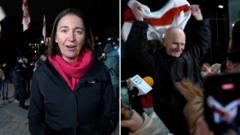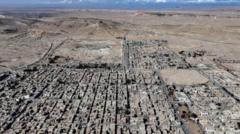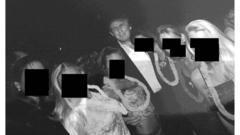
作者:李老白 | 公众号:老白读书

01
今天看到一组数据,让我对我们的人口现状有了更深刻的认知。
联合国人口司对今年的世界新增人口作出了预测,其结果为——
2025年,中国新生人口数量预计是871万多,占全世界新生人口比例,已跌破7%!
而这个数字在去年还是接近7.4%。
谨慎起见,我要说明一下,这不是我们的官方数据,我们的数据还没公布,这是联合国的预测。
至于这个数字有多准,见仁见智吧。
说回数字。
我国新出生人口占世界总出生人口的比例,最高的时候是达到近27%的,超1/4。
时间点是在建国初期。
随着时间的发展,这个比例逐年走低,直到去年的近7.4%,以及今年的不到7%。
按照预测,这个比值在未来将会更低。
所有这一切都在表明,中国的年轻人都不生孩子了。
为什么?

02
关于中国的年轻人为什么不生孩子这个课题,研究的人很多,给的答案也很多。
一般情况下,这种复杂问题是没有简单解的。
它一般都是由众多相互关联,或者没啥关系的独立问题所一同造成的后果。
这些独立问题不外乎:
1、经济发展是天然的避孕药。这是有统计数据支撑的。
2、经济下行造就低欲望社会,造成年轻人不想谈恋爱也不结婚。
3、高房价、低收入使年轻人对组建家庭、生孩子失去信心。
4、养孩子太贵了。
5、如今的孩子是消费品,已不具备防老功能,现在养老靠社会。
还有没有?
欢迎大家补充。

这一节我们聊聊如今的年轻人不愿意结婚的话题。
《上野千鹤子的私房谈话III:不那么努力也可以》这本书里,作者曾披露了日本的一组数据:
2000年左右,日本的终身婚率是女性5%,男性9%,都是绝对的少数派。
到2015年再次统计时,日本终生未婚率女性达到了14%,男性达到了23%,增长之势已相当迅猛。
但它仍未达到顶点!
据预测,20年后日本的终生未婚率会达到女性每四个人中有一个,男性每三个人中有一个。
即作者认为,2040年左右,日本将有1/3的男性、1/4的女性终身不婚。
中国的情况如何?
老实说,更惨。
2013年时大多还在10%左右,但到十年后的2022年就只剩下5%左右了,接近腰斩。
并且这个是受经济情况影响的。
经济越发达的地区,年度结婚率越低。如上海市2022年结婚率仅为2.9%,远低于平均值!


上面这还是三年前的数据。
据我观察,这几年婚恋市场的情况可以用水深火热来形容。
昨天还看到一篇文章里写,武汉某相亲角里的男女比例是1:9,大量女生(或她们的父母)寄希望于那10%的优质男生。
而更多男生,其实根本不会去那种地方“自取其辱”。
上个月Tim事件,只不过是再次证明了这个判断而已。
甚至那个事件被上纲上线,大概还证明了某些群体在这个事件中破了防。

03
第二个问题我们要说的是,即使结婚了,年轻人也未必会生孩子。
因为他们太穷了,或者说养孩子太贵了。
在《低生育陷阱》中,作者是这么说的:
“因不喜欢孩子才不生孩子的人原本就是极少数,而对于‘想生但因条件尚不具备,所以不生孩子’的多数人来说,开展这类宣传活动也毫无意义。”
并不是现在的年轻人不喜欢孩子了,而是他们迫于种种原因“不能生”。
是什么原因呢?
调查结果如下:

1、“因为孩子的养育及教育太花钱了”这一项遥遥领先。
在30~34岁之间的这个生育主力人群中,因经济问题而放弃生育的比例超过80%!
养孩子太费钱,而年轻人又太穷了。
2、“因为会妨碍自己的工作”和“因为无法承受更多的育儿心理和身体负担”排二、三名。
在30~34岁之间的这个生育主力人群中,这两项占比分别是24%和23%,与第1条有断档式差别。
这两项对应的,我认为主要是现代女性需要工作与育儿两立的问题,这是个很重要的问题。
但经济问题是根本问题。

上面说的是日本,那我们的年轻人是更富,还是更穷?
如果你经常看日剧,会知道当初日本是可以一人上班养全家的,我们做到过吗?
我们这边更多的,恐怕是上班后还得父母时不时资助一下,免得吃土吧。
谁穷谁富,一目了然。
04
养孩子有多费钱?
《深圳市0-3岁婴幼儿家庭养育成本调研报告》显示,2021年深圳市0-3岁婴幼儿总养育成本平均约74612元/年。
而《中国生育成本报告》中也提到,0-17岁城镇孩子的养育成本平均为63万元;
0-17岁农村孩子的养育成本平均为30万元。
关于这个,我曾以2024年人均消费支出为基础,计算出一组数据:
2024年,我国生育一个孩子并将他培养到大学毕业,平均费用已经上涨至75万以上了。

这75.5万只是基础教育支出,在现今这么卷的情况下,很多家长都被给孩子报补习班。
而这又是一个“无底洞”。

当培养孩子的花费水涨船高,大多数人都无法承受时,会带来什么呢?
人们将不愿意生育孩子了。
可能是“少子化”,即便如今生育政策早已放开,很多人也只愿意生育一个了;
也可能是“无子化”,反正也无法指望通过孩子来养老了,不如不生,人生还不那么累。
这么费钱,养个猫它不香吗?
全文完,欢迎在留言区写下您的看法,谢谢阅读!
欢迎转载,请注明来源。


 BBC
BBC
















